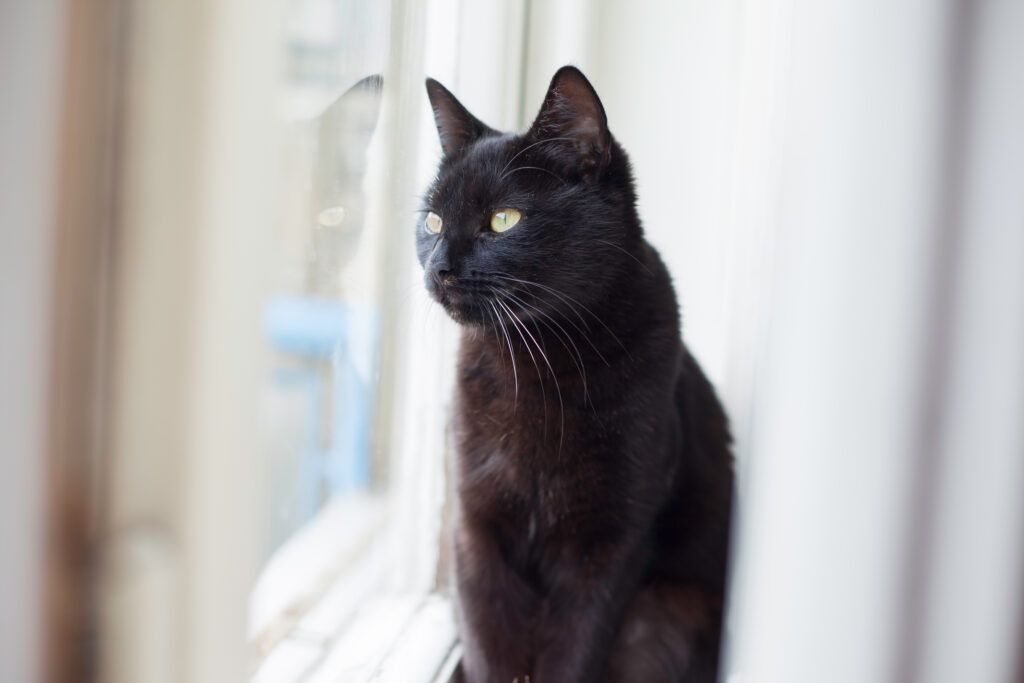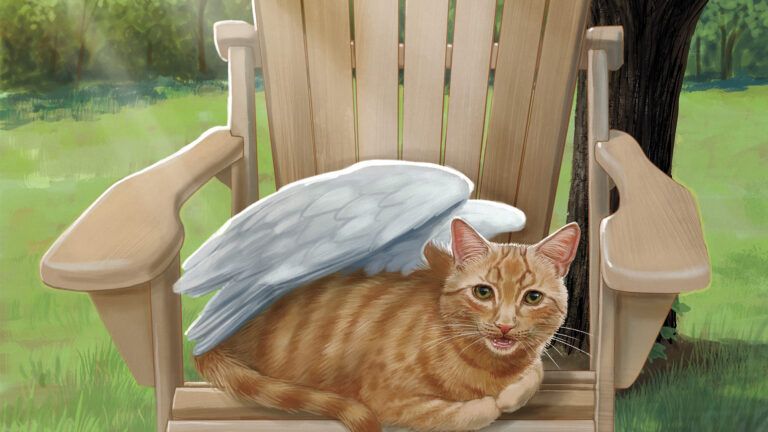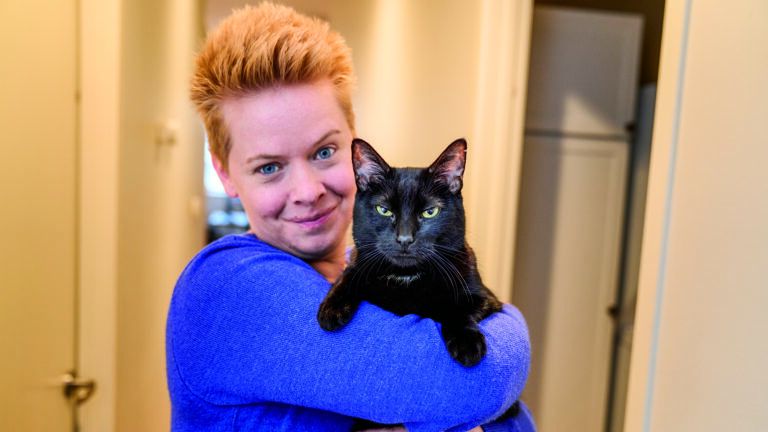If you think getting a tech-savvy 12-year-old to tear his eyes away from an iPad is tough, imagine taking one from a wolf, a gorilla or a black bear. There’s actually a wide range of creatures—big and small, domestic and wild, furry and fowl—that are enthusiastic gamers. While sometimes done for fun, introducing animals to tablets benefits them in different ways and allows people to learn from—and better care for—the animal world.
Scientists have used touch screens with animals for a number of years. Jennifer Vonk, a psychology professor at Oakland University in Rochester, Michigan, has used this technology in zoos and loves its convenience. Stimuli presented on a touch screen can be easily altered to fit a study’s needs, and the system stores all the collected data. On top of that, “the animals I’ve tested seem to enjoy it,” Vonk says. “And it’s relatively easy to get them to understand it.”
Vonk, whose focus is comparative cognition, has conducted studies using touch screens with bears, great apes (orangutans, chimpanzees, gorillas) and ring-tailed lemurs. “Bears were the fastest to learn the association between their responses and rewards,” she says, “probably because they’re so motivated by food.”
In one study to determine if bears could distinguish between animals and nonanimals, the bears were shown pairs of pictures, with one picture representing the animal category and the other representing nonanimal objects, and the bears were quite accurate. Even though they like their earned treats, Vonk thinks that the intellectual stimulation itself is attractive to the bears—they would run indoors from their preferred outdoor habitat when they saw her with the tablet.
Vonk now works with the Detroit Zoo, using touch screens to gather data on gorillas’ emotional states. Her goal is to understand how they feel about their indoor and outdoor zoo environments, as well as the crowds. Like the bears, the gorillas are trained through rewards to understand what’s being asked. “It’s a lot of trial and error to see what they pay attention to,” says Vonk, who admits that within a single species there is a wide variety of response. “You really see how individual they are, just like us.”
Can’t picture a bear swiping a screen with one of its massive paws? How about a wolf using its nose? That’s what Lina Oberliessen, a Ph.D. student at the Wolf Science Center in Austria, is used to seeing. Since January 2017, Oberliessen has used a tablet to study wolves’ fairness preferences by observing how they choose to distribute food rewards among themselves and their peers. With different symbols representing the amounts of treats dispensed, the wolves decide who gets how much by tapping the screen.
Oberliessen realized that for some wolves, just touching the screen is a reward in itself. “I had one wolf, Shima, who often chose the wrong symbol, where no food reward was given, but she just continued working,” she says. Another wolf, Tala, “used her paws when she realized that her nose touch wasn’t strong enough to activate the screen. She was really motivated to get the right results.”
The wrong choice—instances when the wolves tapped the empty side of the screen instead of a symbol—also elicited strong reactions.“They try to quickly tap the correct answer to compensate for their error,” Oberliessen says. “Some of them keep touching it again and again, so it seems to be quite important for them to be successful.”
Mammals aren’t the only animals that have been trained with touch screens. Red-footed tortoises have gotten into the game too, transferring what they learn on-screen to real-life situations, according to Anna Wilkinson, an animal cognition specialist at the University of Lincoln in England. After being asked to consistently peck a blue circle on a particular side of the screen to receive a strawberry, the tortoises also chose a blue bowl placed on the same side of a room as the on-screen circles.
They like using the tablet so much they’re literally willing to stick their necks out so that they can touch it, an indication that they feel excited and comfortable. Wilkinson also discovered that the tortoises remembered what they had learned on the tablet for as long as three months, a surprising outcome considering they lack a hippocampus, the part of the brain associated with memory and spatial awareness.
Music was the focus of Sarah Ritvo’s study. Using touch screens, the doctoral candidate in comparative cognition at York University in Canada found that orangutans preferred silence to songs. The great apes displayed antagonistic behavior—blowing raspberries, scratching their torsos—when they listened to music samples played on the tablet, and they exhibited calm behavior when the tunes were paused.
One of Ritvo’s colleagues unexpectedly learned that orangutans have a follow-the-leader streak. When testing whether they prefer images of their own species or other apes, the dominant male used a stick to tap the screen to avoid touching a photo of another male. After that, the other orangutans all insisted on using a stick too. Regardless of their tools, they’re happy to have a challenge, and the cognitive stimulation helps them thrive in captivity.
It’s not all about research, though. Kim Barker, a volunteer at the Conservators Center in Burlington, North Carolina, offered some mental stimulation to servals—African wildcats—with an iPad game called Paint for Cats, in which a mouse runs across the screen and splatters paint and squeaks when touched. “Servals want to catch things that move,” Barker says, “so they like seeing a digital mouse run and hearing it squeak. You can see it on their faces.”
Adina Olivares, a nurse in Manteca, California, who rescued a pigeon that had been attacked by a hawk, employed the tablet as a healing tool. Using an iPad game designed for cats, she got the pigeon—which was walking and eating erratically—to peck at the screen and walk around it to “catch” her prey. After a few months, her appetite and condition had vastly improved. “She’s still the messiest eater you’ve ever seen,” Olivares says. “But now she’s loving life.” The nurse emailed the game’s creator, TJ Fuller, to thank him.
Fuller, an animation and graphics expert, didn’t own a cat but happened to see some YouTube videos of cats swatting at human iPad games. Why not games for cats? he thought. After beta testing at an animal shelter, he launched Game for Cats, featuring a laser dot, a mouse and a butterfly for a cat to chase on-screen. Since then, Fuller has received thank-you letters from all over, including one from Sara Mandel, an aviculturist at Aquarium of the Pacific in Long Beach, California.
Mandel’s cats loved Game for Cats, so she tried it with the aquarium’s penguins. “Penguins are very visual hunters and have amazing eyesight,” Mandel wrote. “It’s not that surprising they took to it so quickly, because our birds are so curious and love to explore different textures.” Screen time has a practical purpose for Mandel, too. While the birds are focused on the game, she’s able to examine their bodies to make sure they’re healthy and to slide a scale under them to take their weight. Granting screen time in order to get work done? Sounds like a familiar concept.
For inspiring animal-themed devotions, subscribe to All God’s Creatures magazine.





